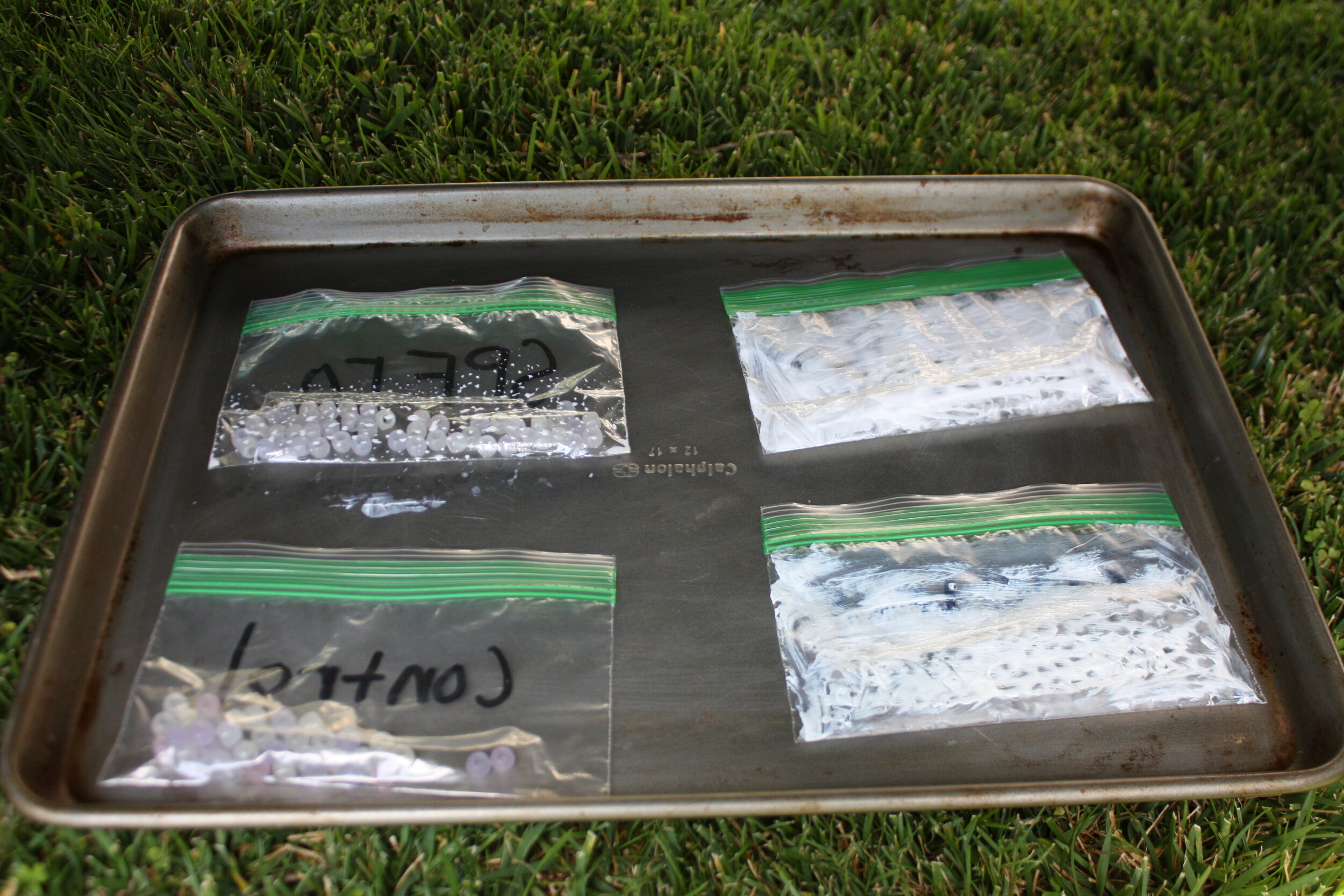The Best Sunscreen!
You’ve heard about SPF. In fact, you might be wearing some right now. But, what does SPF really mean? And does higher SPF sunscreen protect your skin better from the sun’s UV rays? Experiment to find out!
Materials
UV/Color changing beads
Different protections of sunscreen
For example: SPF15, SPF20, SPF30
4 zipper baggies
Sharpie/marker
**SPF stands for “Sun Protection Factor”
Procedure
In science, we call the steps to carry out an experiment the procedure
Step 1
Label the bags. Label 1 bag as “control.” Label the other three bags as the SPFs of the sunscreen you have (for example: SPF15, SPF20, SPF30).
Step 2
Spread the sunscreen over the unlabeled side of the designated bags. The bag labeled "control" will have no sunscreen on it. This project may get a little messy so you might want a tray to put all the bags on.
Step 3
Wash your hands!
Step 4
Separate the color changing beads into the 4 zipper bags. Be sure to put the same amount of beads in each bag. The UV beads change super quick, so try to keep them out of the sun’s UV exposure until you are ready to begin the experiment.
Step 5
Place your zipper bags out in the sun for about 3-4 minutes. While you wait, make an educated guess, or hypothesis. UV beads change color when put in sunlight. Sunscreen protects us from sunlight. Which bag do you think will have the least color change? The greatest?
STEP 6
Observe the beads. Which bag had the greatest color change? What does that tell us about the SPF strength? Was your guess (or hypothesis) correct?
Science & Math Explanations
K-2nd grade . . .
- Does the time of year affect the amount of sunlight during the day? (Yes!)
- If you go out and observe the sky during the summer, you will find that the sun does not set until around 8:00 PM!
- If you observe the sky in winter you will find that the sun sets at around 6:00 PM.
(NGSS1-ESS1-2) - How does this happen?
- The Earth is able to move and rotate and depending on how the rotation of the Earth determines how much sunlight there is
- Although the sun is around all year, the most daylight is going to be found in the summer!
3rd grade . . .
- When you split up the beads, try to ask yourself if you are dividing or multiplying the beads into the bags
(CCSS.MATH.Content.3.OA.A.2)
6th-8th Grade . . .
- Wondering why one bag is named control?
- Well, you need one of the bags of beads to compare to
- By having 1 bag with no sunscreen, you can see how the beads with react with 0 sunscreen applied
- Now you can compare the control or “no sunscreen bag” to the different types of SPF applied to the bags of beads
(Scientific Method) - What does sunscreen protect you from?
- UV rays that are produced from the sun that can harm your skin
- What are tissues in our skin and do UV rays affect them?
- UV rays stand for ultraviolet radiation
- They contain particles called photons that are harmful to our skin
- Our skin is made up of cells, which then make up the tissue of our skin
- The SPF sunscreen makes it so less photons are absorbed by the tissue in our skin
- Photon: A photon is the basic unit of all light
(MS-LS1-3)
Created by Mikayla Vu Inspired by Steve Spangler Science






